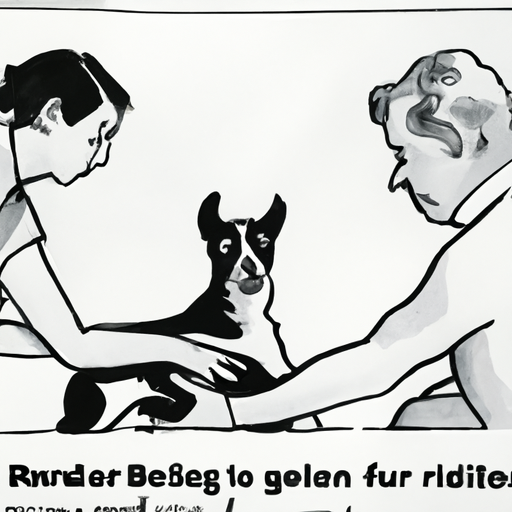Our furry friends are an integral part of our lives. They offer companionship, love, and endless amusement, but it can be distressing when something seems amiss with their health. One such issue that can cause concern is when dogs ribs hurt when touched. This could be a sign of various health conditions, from minor injuries to more severe internal disorders.
Table of Contents
- Understanding the Anatomy of Dogs
- Common Causes for Rib Pain in Dogs
- Symptoms to Look Out For
- Diagnosing Rib Pain in Dogs
- Treatment and Care
- Preventing Rib Pain in Dogs
- Frequently Asked Questions
Understanding the Anatomy of Dogs
Before delving into the specifics of rib pain, it’s essential to grasp a basic understanding of a dog’s anatomy. Dogs, like humans, have a rib cage that protects vital organs such as the heart and lungs. If your dog shows discomfort when touched in this area, it could be indicative of problems related to these organs, injuries, or even diseases.
Common Causes for Rib Pain in Dogs
There could be several reasons why your dog’s ribs hurt when touched:
- Trauma: This could be from an accident, fall, or rough play. Traumas can result in bruises, fractures, or more severe injuries like internal bleeding.
- Infections: Certain infections can cause discomfort in the rib area. These could be bacterial, fungal, or viral infections.
- Arthritis: Older dogs, especially, may suffer from arthritis, which can affect any joint, including those in the rib cage, causing pain and discomfort.
- Cancer: Tumors or cancers can also cause rib pain, although this is less common.
Symptoms to Look Out For
Aside from the evident discomfort when their ribs are touched, other symptoms may indicate a problem:
- Difficulty breathing
- Loss of appetite
- Lethargy
- Visible swelling or deformity in the rib area
- Difficulty moving or reluctance to play
Diagnosing Rib Pain in Dogs
If you suspect your dog is suffering from rib pain, it’s important to seek professional help. A vet will likely conduct a physical examination and may require further diagnostic tests like X-rays or ultrasounds. This article from OneTopDog provides more information on diagnosing health issues in dogs.
Treatment and Care
Treatment for rib pain in dogs greatly depends on the underlying cause. Trauma might require rest and pain relief, infections may need antibiotics, and more severe conditions like cancer could require surgery or other treatments. OneTopDog also offers a comprehensive guide on how to care for a dog recovering from injury or surgery.
Preventing Rib Pain in Dogs
Prevention is always better than cure. To prevent injuries, ensure your dog’s play and exercise is safe. For older dogs, regular vet check-ups can help detect and manage arthritis early. Always keep your dog’s vaccinations up-to-date to prevent infections. For more tips on dog care, check out this dog care guide from OneTopDog.
Frequently Asked Questions
How can I tell if my dog is in pain?
Dogs often hide their pain, but signs can include changes in behavior, appetite, or activity level, excessive licking or chewing at a particular area, and vocalizations like whining or growling.
What should I do if my dog’s ribs are hurting?
If you suspect your dog’s ribs are hurting, it’s crucial to get them to a vet as soon as possible. Never try to diagnose or treat your dog’s pain yourself.
Can dogs take human pain medication?
No, many human pain medications can be dangerous or even fatal to dogs. Always consult with a vet before giving your dog any medication.
In conclusion, rib pain in dogs can be a distressing sign of various health problems. As a pet caregiver, your vigilance, quick action, and regular veterinary care can help keep your furry friend healthy and happy. It’s important to remember that you’re not alone in this journey. The online dog community and resources like OneTopDog are here to help you along the way.



